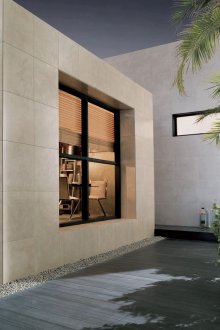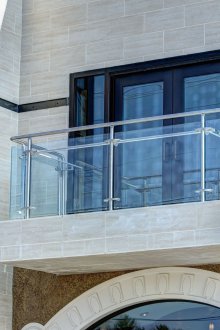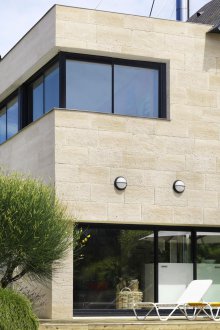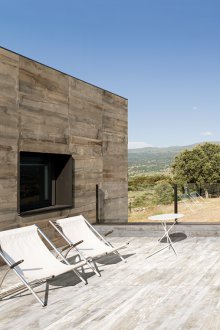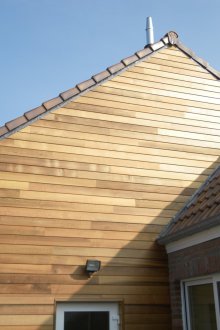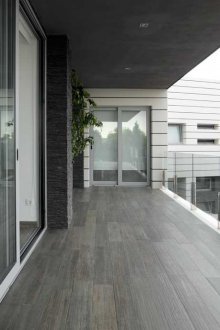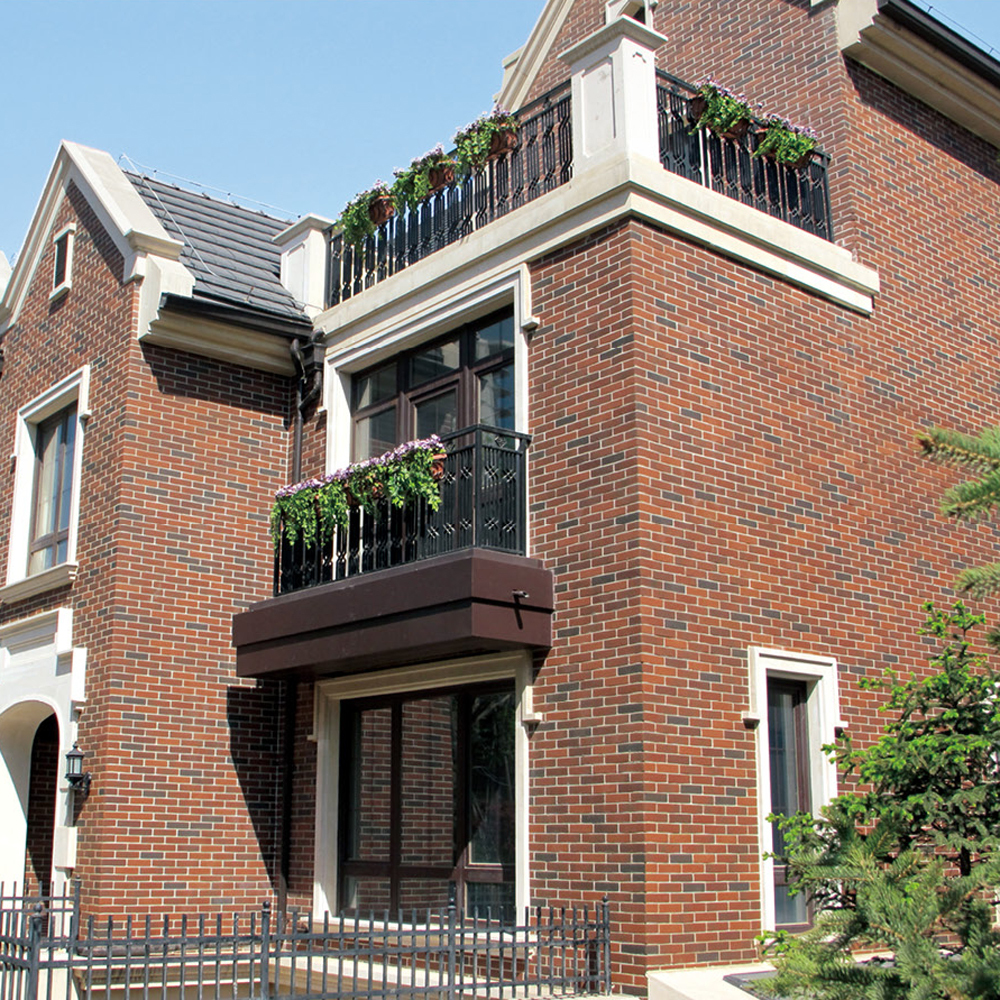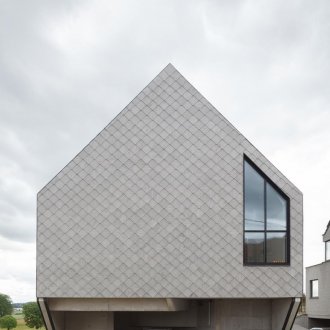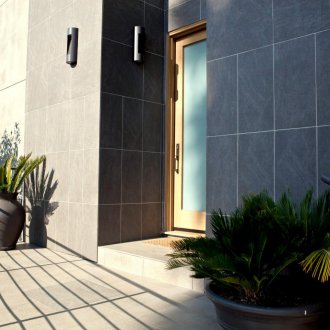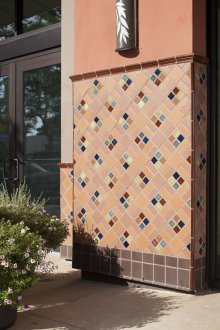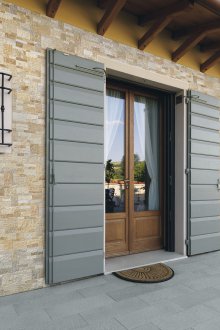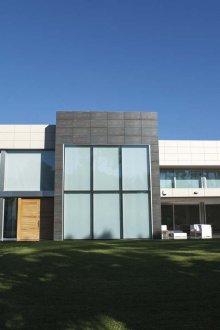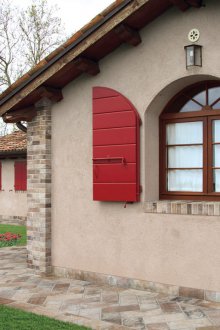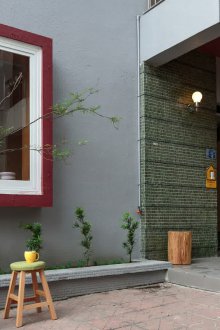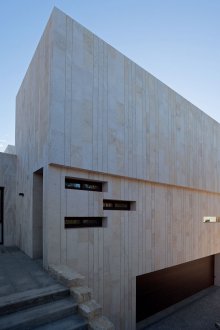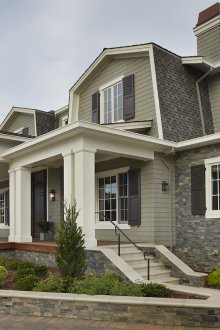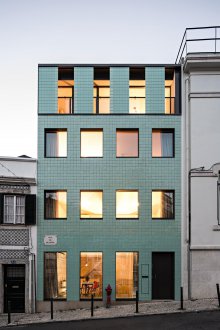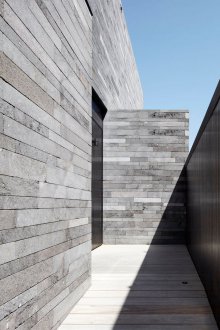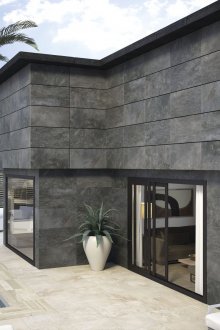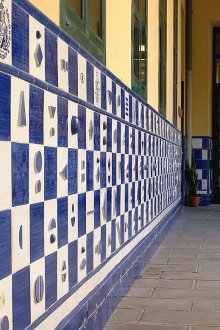Facade tile: unlimited possibilities for creating spectacular facades (21 photos)
Content
On how the facade of the house looks, the opinion of people about its “filling” largely depends. Facing allows you to give the architectural composition completeness, to make landscape design perfect, to combine all the elements on the site into a single harmonious composition.
How to make a house "smart"?
The visual perception of the facade is influenced by many factors. The right color is important. Dark chocolate tones, natural “stone” textures give solidity and high cost, a multi-color mosaic makes the exterior colorful and unusual.
Beige cladding even on the darkened side of the house will look elegant. The facade tile "fragmentary stone" with multi-colored impregnations will make a simple facade devoid of additional decorative elements, more complex in architecture and stylistic composition.
The texture can also give a certain respectability to the building, rid the facade of monotony and dullness. The simplest facade tile with a pleasant glossy shine will instantly transform the “face of the house”. Decorating walls with natural stone or using porcelain tiles will give a special festive look to the facade.
Finish options
Before proceeding with the ennoblement of the walls, it is necessary to determine what kind of material is worth dealing with. Facing the facade of the house can be a variety of materials:
- Plastic (all kinds of polymer options, high-quality and aesthetically perfect PVC, including the "budget" mosaic ");
- Siding at home (a wonderful modern flexible composition for walls);
- Front tile from concrete;
- Wooden wall decor;
- Fake diamond;
- Facing natural stone (the most popular facade marble tile);
- Front tile under a brick;
- Polymer sand front tile;
- Clinker tiles (brown, multicolor, gray, white, beige tones).
There are other options. Each type of material has its own special qualities, requires proper preparation of work surfaces, and also has its own nuances and subtleties of installation.
Tile for decoration "boar"
The ceramic front tile "wild boar" enjoys incredible popularity. The special design makes it possible to store and transport goods with special convenience.
Rectangular elements of small size were very fond of the masters of the USSR. Almost every new home was tiled. On some buildings of that time, canvases were still preserved. Finishing with facade tiles of this type is becoming more popular today.
Manufacturers give products an elegant shape. Now this is a real decorative facade tile with a special texture, color. All types of "wild boar" are used to highlight the basement of the house. Facing will help to beautifully decorate the porch from the outside, as well as to design an aesthetic pediment.
If a straight or diagonal seam is used for laying ordinary tiles, then laying a “boar” can be done in other ways. For example, you can lay the elements apart, with the displacement of the seams or fix the tile in a vertical position.
Brick tile
Clinker facade cladding tiles are available in the form of compact rectangles (for example, “Canyon” facade tiles). There is a square shape, as well as complex geometric shapes. To create a clinker tile, special types of clay are used and lend themselves to intense high-temperature firing.
The clay mass is not pressed, but an innovative extrusion method is used. This ensures high density. Tile material has excellent strength characteristics.
Clinker tile laying is possible even in the form of a mosaic composition. Complex geometric shapes make it possible to use a similar cladding to ennoble steps, pools, complex architectural elements that complement the building’s facade. Clinker tiles are good for working with internal and external corners. In addition, clinker is the most popular front basement tile.
Most often, clinker unglazed tiles are found. Also, it is rarely enameled. Despite this, such facade tiles for exterior decoration in strength and resistance to mashing occupies almost a leading position, imitating the quality of marble.
Interesting combination
It is worth mentioning an interesting combination of clinker facade tiles and thermal panels. This combination of materials allows not only aesthetically enriching the facade of any house, but also significantly warming the building.
The effect of significant warming is achieved due to the special composition of thermal panels. To make them, you will need polyurethane, marble chips and sand. At the end of the installation of the soft insulation base, a clinker facade tile is installed on the walls, the characteristics of which are pleasing in all positions.
Cotto
“Cotto” is a ceramic facade tile, which is distinguished by a particularly porous and unusual structure. Clay is carefully selected for production, and then heat treatment is carried out using very high temperatures.
Finishing ceramics of this type is not complemented by an enamel coating. Products only grind and polish. In addition to the traditional rectangle, elements for the external decoration of walls are produced in the form of triangles, small and large squares, diamond-shaped, as well as polyhedrons.
Facade tiles are smooth and pleasant to the touch. It brings a special charm and a touch of antiquity to decorated architectural elements. The traditional colors are presented in such colors:
- Yellow;
- Pink;
- Red;
- Brown;
- Terracotta.
Facade tiles "brick", mosaic, artificial stone - with the help of "cotto" you can realize many ideas. It is noteworthy that the cladding with the help of such material is carried out not only for the facade, but also for the walls indoors.
Porcelain Tiles
Porcelain tile appeared relatively recently, but has already managed to gain unprecedented popularity. For the manufacture of products using granite chips, expanded clay and a number of additives.
It is believed that this type of finish is the most convenient in terms of installation. How to fix a facade tile every beginner knows. Moreover, it is this particular material for wall decoration that tolerates low temperature. You can safely make porcelain stoneware any external surface.
Another important advantage is the pronounced aesthetic value. Often porcelain tiles imitate natural textures so skillfully that they can replace any artificial stone.
The disadvantage is the fact that a mosaic of such elements, most likely, will not work. Cladding from such tiles is ultimately quite heavy in weight, so it’s still not worth making lightweight structures with the material.
Facade Concrete Tile
Concrete facade tile is an excellent facing material. Plain gray tiles can complement the exterior of private estates, as well as give respectability to administrative buildings.
Concrete facade tile consists of the following components:
- A substance for ligaments (usually Portland cement);
- Quartz sand as a filling base;
- Additional filler to lighten the weight of future products;
- Additives to improve product performance.
A high-quality product is quite capable of replacing artificial stone. The tiles are painted in different colors, giving different surface textures.
Cement and gypsum decorative stone
Today you can meet many options for simulating natural textures. Most often, these are cement products and gypsum tiles. Many buyers confuse these two types of finishing materials, so consider finishing in the form of a comparative characteristic.
The facade tile with a heater based on cement also consists of such components: Portland cement, sand, reinforcing elements, colored pigments, pumice, expanded clay crumb, ceramic inclusions. Gypsum "artificial stone" is formed by the gypsum itself with various fillers, plasticizers and pigments.
Gypsum, although valued for its flexibility and pleasant texture, but it is very afraid of moisture. It is not used for decoration of facades in a “pure form”. After installation, the surface must be covered with protective compounds.
Gypsum elements are lighter than bituminous facade tiles or porcelain tiles with metal fittings. That is why it is really possible to create quite complex compositions from it without weighing down the wall. But the cement tile needs a special solution with increased adhesion. It may also take longer to dry the entire composition.
The nuances of thermal insulation
It is worth noting that the finishing of the walls of the house and the insulation of the house are two processes that are interconnected with each other. Regardless of which decorative material was chosen (mosaic, porcelain stoneware, natural stone, tile), the walls need to be insulated with the help of auxiliary materials.
Most often, they insulate houses with a foam cloth or polystyrene foam. Sometimes they can combine fragments of polystyrene with other heaters. Some plastic finishing material in itself is a heater, as well as some types of decorative plaster. The nuances regarding the insulation of a house are best discussed with experienced specialists.
